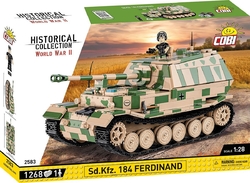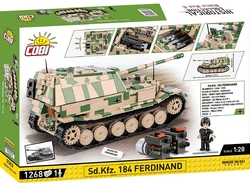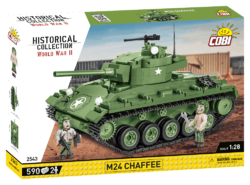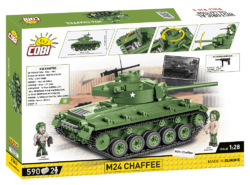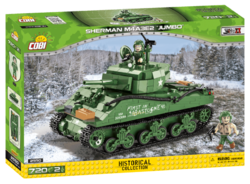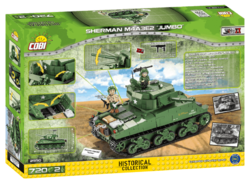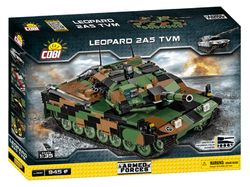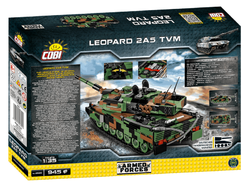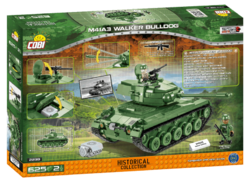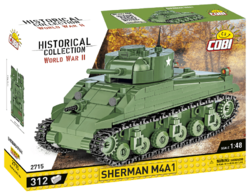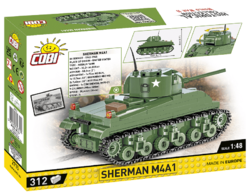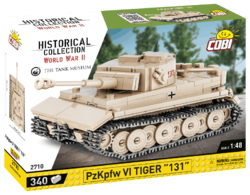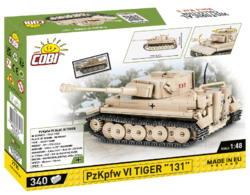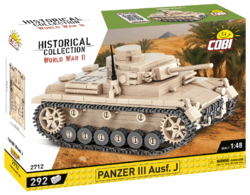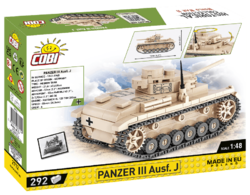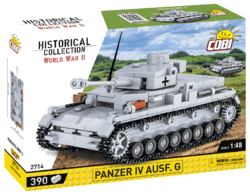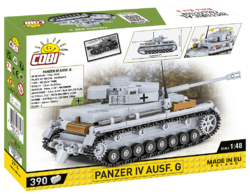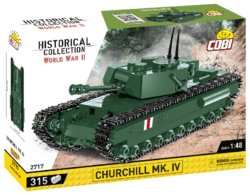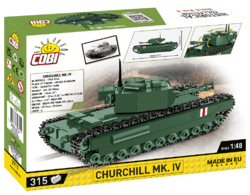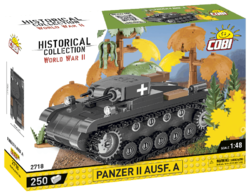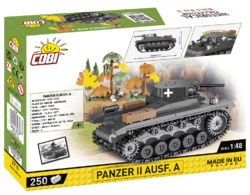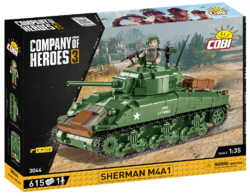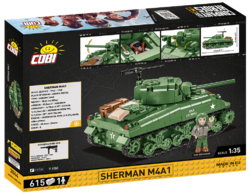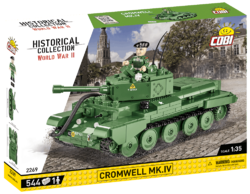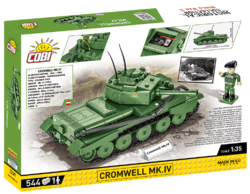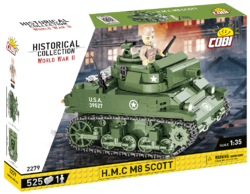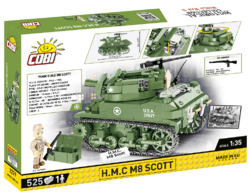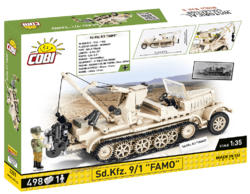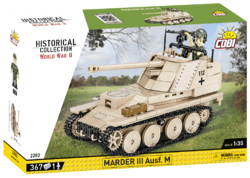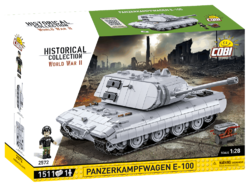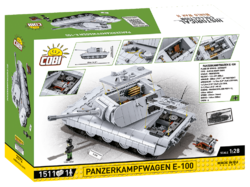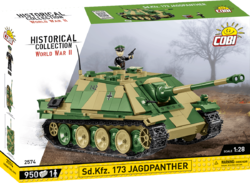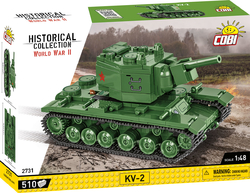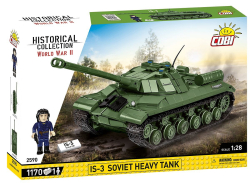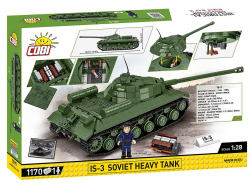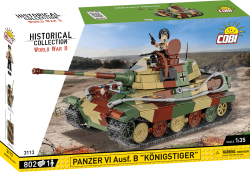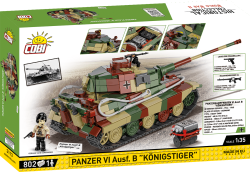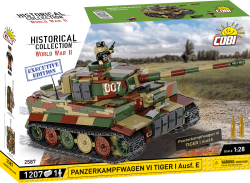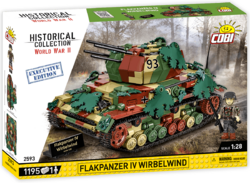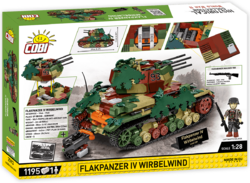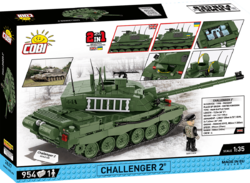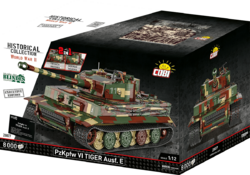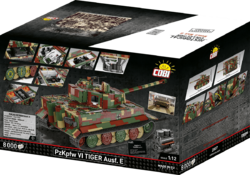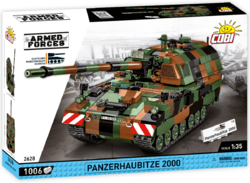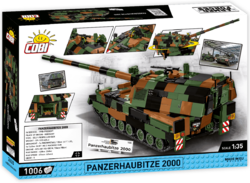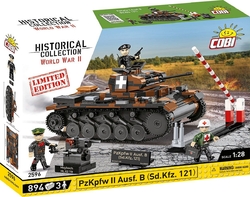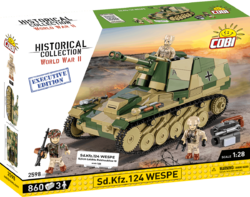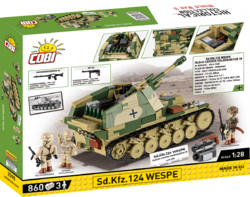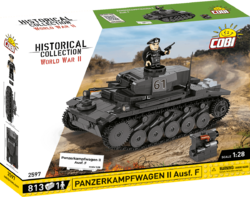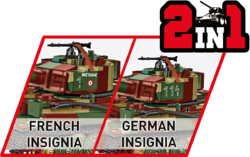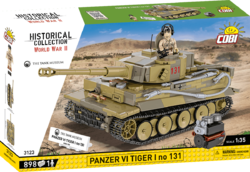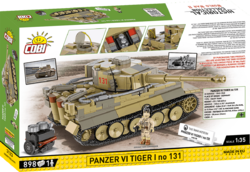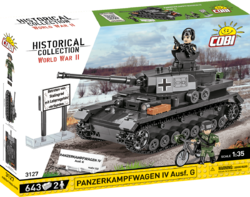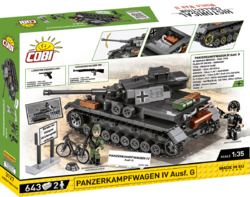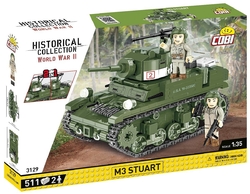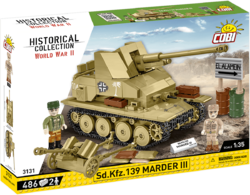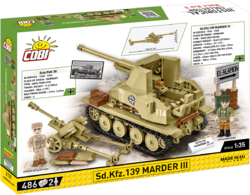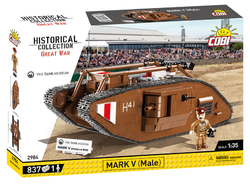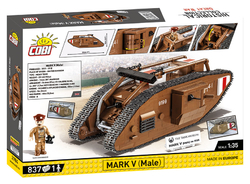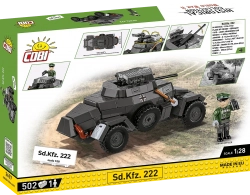German heavy tank destroyer Panzerjäger Tiger (P) Sd.Kfz.184 Ferdinand COBI 2583 - World War II 1:28
Kit of the German heavy tank destroyer Ferdinand in field camouflage. The assembled model has an adjustable sight and gauge of the cannon, an opening hatch of the tower for placing the figure. Under the removable top cover of the tower, there is a place for a charger with a sliding system of the cannon and stored cartridges. In the front part, the Maybach 120TRM engine is stored under the cover, which can be displayed separately. The package also includes a tank commander figure with headphones and binoculars. And, of course, there is also a cube with a description.
Show more
0 %
(0 Ranking)
1 864 Kč
pcs
Add to Cart
In stock - ready to ship (2 pcs)
| List Number: | COBI-2583 |
| EAN: | 5902251025830 |
| Warranty: | 24 months |
| Manufacturer: | COBI |
| Loyalty Points: | 12 |
| Price excluding VAT: | 1 540,63 Kč |
Description
Parametres
Files and Links1
Discussion
Reviews

You know that:
- When in 1941 the German Armaments Office announced a competition for a heavy armoured vehicle with a minimum 88 mm calibre gun, two companies entered the competition, Porsche and Henschel. Ferdinand Porsche was so sure of his victory that he did not wait for the announcement of the competition results and immediately began serial production. When, during a meeting at the Heereswaffenamt in Berlin, Porsche learned that Henschel had won the competition, he had such a fit of rage that it was impossible to calm him down. Later, it was decided to use the work in progress, but that is another story.
- Henschel produced the first units in March 1943. There was no time for thorough testing due to the situation on the Eastern Front. The first tanks were deployed in the Battle of Kursk. Ferdinand was a tough opponent, literally. The Soviet army at that time did not have a weapon and ammunition capable of penetrating the frontal armor of a tank.
- But even such a heavily armoured tank fighter had its weaknesses. Behind the destruction of many pieces is zero protection from enemy infantry, for which the lone clumsy Ferdinand became easy prey. All he had to do was climb onto the hull of the vehicle.
- The machines that survived the Battle of Kursk were sent back to Germany for a rebuild that was supposed to eliminate the major deficiencies. The tank was fitted with an MG 34 machine gun and a periscope. Two 5l carbon dioxide extinguishing tanks were also installed. The modified tank fighters were named Elefant.
- Despite all the disadvantages, the Ferdinan commanded great respect from the Red Army. The deployment of these machines was mirrored in contemporary Russian literature and newspapers. All the newspapers of the time wrote about a machine so large and powerful that no army in the world had ever encountered. But the fearless Red Army had already destroyed thousands of them. The problem is that only 90 Ferdinands were deployed on the Eastern Front.
- The last Elefant was not destroyed until April 22, 1945, on the outskirts of Berlin.
Technical parameters:
- dimensions: length with cannon 8,14 m, width 3,43 m, height 3 m
- ground clearance 57 cm
- weight 65 000 kg
- armour: front 200 mm, hull sides 30 mm, ceiling 30 mm
- propulsion unit 2x Maybach HL 120 TRM petrol engines each with 220 kW output with power transfer to Siemens electric generators
- off-road speed 9 km/h
- maximum speed 30 km/h
- fuel tank capacity 520 l
- range 150 km on the road or 90 km in light terrain
- main armament 88 mm KwK 43 L/71 gun (55 rounds)
- crew 6
From the memoirs of German commander Heinz Rempel:
"Ferdinand was a nightmare for us. He was the worst tank we ever had. It was so heavy that it often got stuck in the mud or on bridges. It was so unreliable that it broke down frequently and we had to repair it. It was so clumsy that it couldn't turn around if we hit an obstacle. And it didn't have a machine gun, so we were defenceless against infantry. It was a hell machine."
Assembly instructions
| Number of figurines | 1 pcs |
|---|---|
| Scale | 1 : 28 |
| Version (series) | 12/2023 |
| Number of pieces | 1268 pcs |
| Package weight | 1415 g |
| Dimensions after assembly | 28,5 x 12,5 x 14 cm |
| Box dimensions | 45 x 30,5 x 7 cm |
| Recommended age | 9+ |
| Material | Plastic |
| Collection | World War II |
| Compatible with other brand of kits | Yes |
Discussion is empty.
There is no review for product yet






















